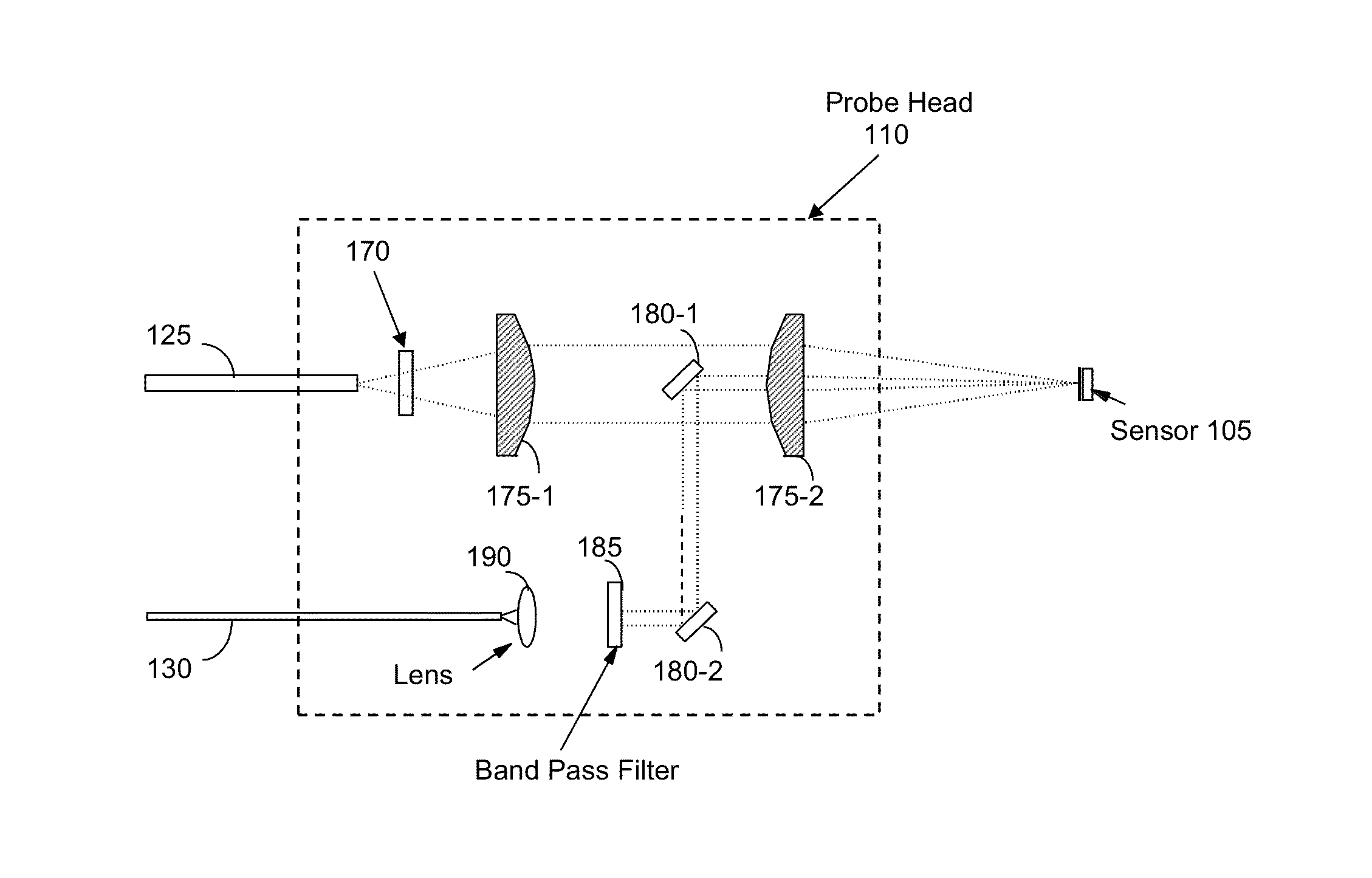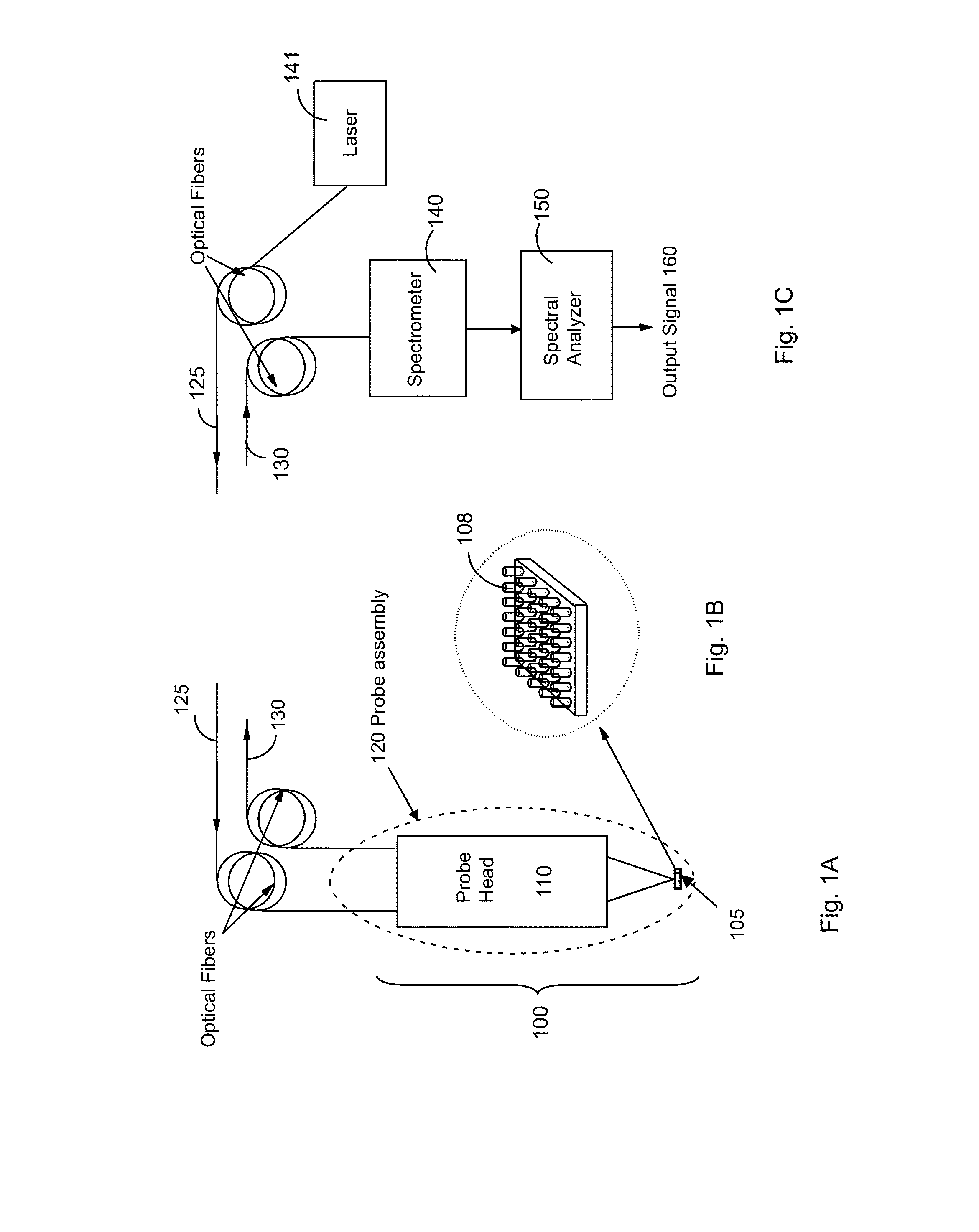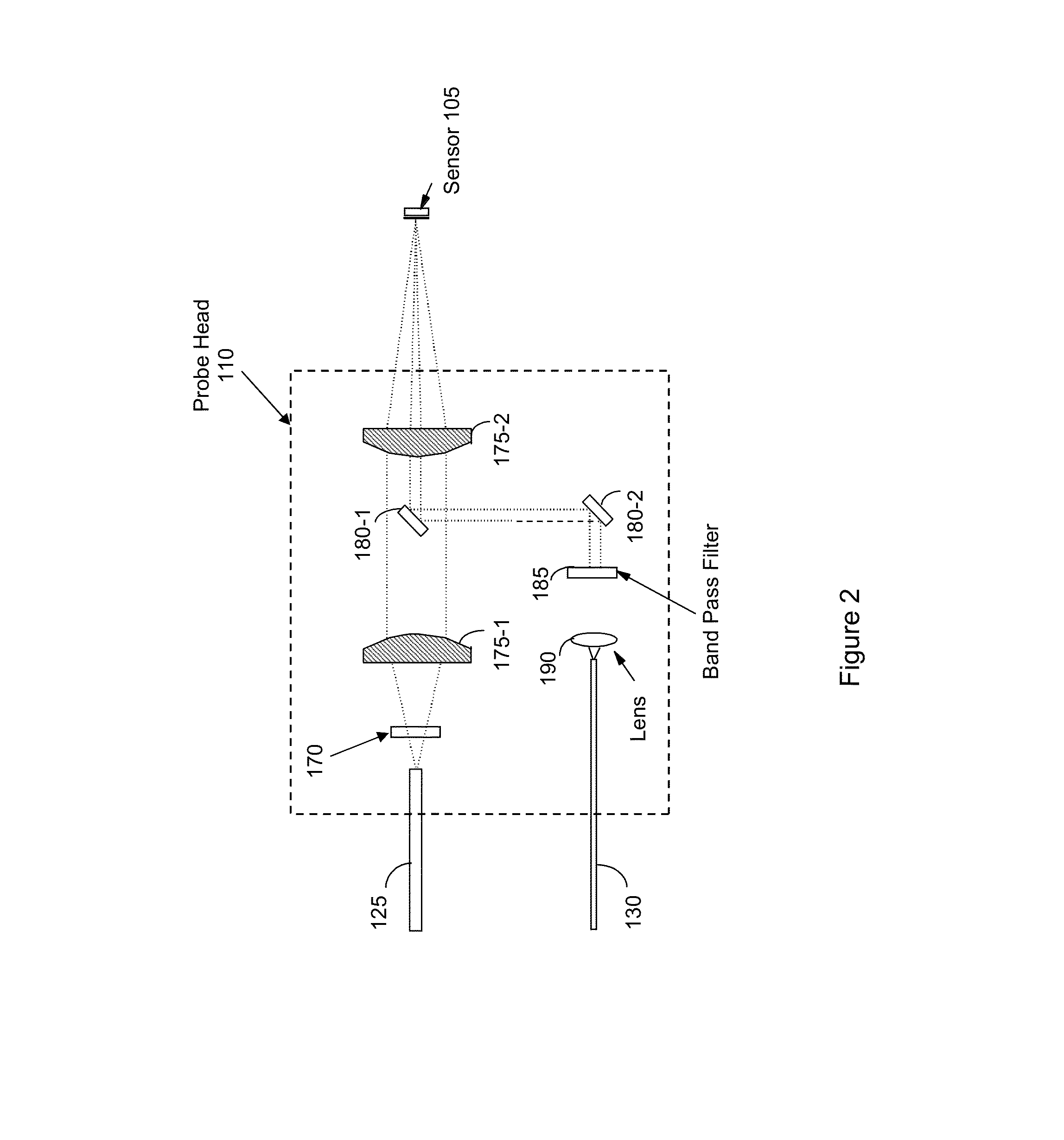Assuring food safety using nano-structure based spectral sensing
a spectral sensing and nanostructure technology, applied in the field of food safety monitoring using nanostructure based spectral sensing, can solve the problems of weak raman scattering signals from limited application of raman scattering in sensing chemicals and biological agents, and inability to achieve practical and economical detectors based on raman spectroscopy, etc., to achieve fast turn-around time, improve food monitoring and safety, and facilitate detection
- Summary
- Abstract
- Description
- Claims
- Application Information
AI Technical Summary
Benefits of technology
Problems solved by technology
Method used
Image
Examples
Embodiment Construction
[0060]FIGS. 1A-1C respectively illustrate a system for detecting trace chemical or biological substances using surface-enhance Raman scattering. Referring to FIG. 1A, a light scattering probe 100 includes a probe head 110, and a sensor 105 positioned adjacent to the probe head 110. The sensor 105 includes a nano surface structure. For example, the nano surface structure can include a plurality of nano rods 108 (shown FIG. 1B), a plurality of nano holes, a cluster of nano particles in solution, or other surface structures having dimensions at nanometer scale. In some embodiments, as described below, a nano structured surface structures can be prepared by coating the surface of the sensor 105 of a solution containing a colloidal suspension of nano particles. The solution can be subsequently evaporated to deposit the nano particles on the surface. In the present specification, the term “nano particle” refers to a particle having at least in one dimension with a size smaller than 1,000 ...
PUM
| Property | Measurement | Unit |
|---|---|---|
| size | aaaaa | aaaaa |
| widths | aaaaa | aaaaa |
| temperature | aaaaa | aaaaa |
Abstract
Description
Claims
Application Information
 Login to View More
Login to View More - R&D
- Intellectual Property
- Life Sciences
- Materials
- Tech Scout
- Unparalleled Data Quality
- Higher Quality Content
- 60% Fewer Hallucinations
Browse by: Latest US Patents, China's latest patents, Technical Efficacy Thesaurus, Application Domain, Technology Topic, Popular Technical Reports.
© 2025 PatSnap. All rights reserved.Legal|Privacy policy|Modern Slavery Act Transparency Statement|Sitemap|About US| Contact US: help@patsnap.com



